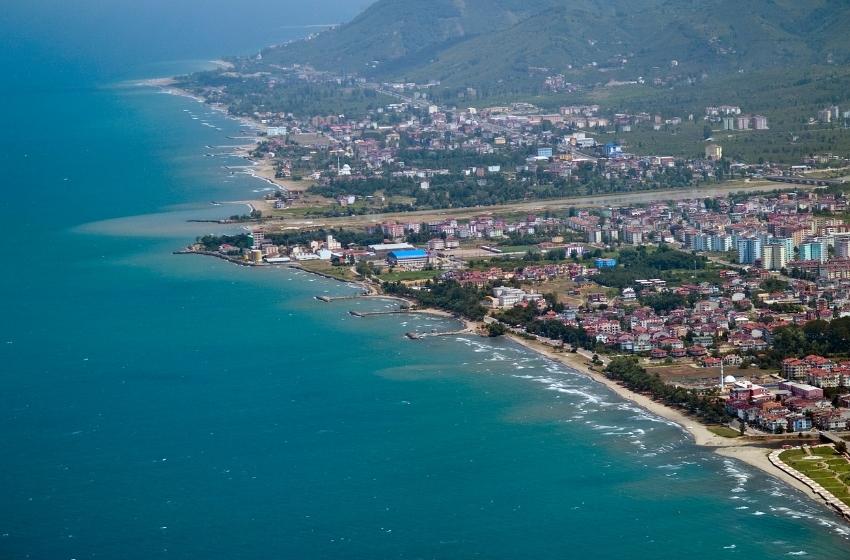The publication was prepared with the financial support of the EU – UNDP project ‘Improving Environmental Monitoring in the Black Sea: Selected measures’ (EMBLAS-Plus). This publication was produced with the financial support of the European Union and UNDP. Its contents are the sole responsibility of the authors and do not necessarily reflect the views of the European Union or UNDP.
Authors: B. Aleksandrov, O. Adrianova, N. Atamas, V. Bolshakov, O. Bondarenko, I. Chernichko, V. Demchenko, S. Dyatlov, Y. Dykhanov, E. Dykyi, O. Garkusha, P. Gol’din, S. Hutornoy, V. Komorin, Y. Kvach, V. Mamaev, O. Manturova, O. Marushevska, A. Mikelyan, Yu. Mikhalev, G. Minicheva, I. Sinegub, T. Shiganova, J. Slobodnik, A. Snigiryova, M. Son, K. Vishnyakova, A. Zotov. Illustrator: I. Pustovar.

The Black Sea can be compared to a layer cake, every layer of which is made of different batter. The temperature of deep layers of the sea is +8°-9°C year round, but from the water surface to the depth of 50m temperatures can change rapidly and significantly. Contiguous with the deepest layer, the cold intermediate layer is located between two different water masses. Here, the water is cooler than on the surface, with a temperature always between +5°-8°C. Cold intermediate layers are also found in other parts of the world’s oceans, but generally only in certain seasons, whereas the Black Sea’s cold intermediate layer is perennial. At a depth of 500m, the temperature is +8.9°C, and is nearly uniform (changing by only 0.2°C all the way to the bottom (more than 2200 m). But in contrast with the rest of the world’s oceans, temperatures rise at the very lowest layer, to +9.1°C. It is assumed that the reason for this phenomenon is heat flowing through the earth’s crust, coupled with low water exchange in the Black Sea basin.

So, what is the secret of the Black Sea ‘layer cake’? Water comes to the Black Sea from two sources: from the Sea of Marmara through the Bosphorus, and from rivers. The water of the Bosphorus is much saltier - and accordingly denser - compared to Black Sea water and especially in comparison with fresh water. Heavy water masses from the Bosphorus Strait run down the continental slope to the bottom, whilst fresh water spreads over the surface. The density of fresh water further depends on temperature: the warmer it is, the less dense are the waters. In winter as the water cools, it becomes heavier and descends, whilst in summer the surface water heats up and - being warm and light – ‘rests’ on cooler and denser layers. Mixing occurs only within the desalinated surface layer; below this lie the saltier and denser Bosphorus waters, which form an insuperable barrier - a sort of ‘liquid bottom’. But the change of water properties according to depth is uneven: from the surface up to the depth of 50-100m the salinity changes rapidly - from 17% to 21%. Underneath these uppermost layers, salinity rises evenly to a maximum of 30 % (matching the salinity of the Sea of Marmara). This is how two different types of waters appear: the desalinated surface layer mainly of river origin and the saline ‘Bosphorus’ bottom layer.
A reader may have an erroneous impression that there is no exchange between the deep and the surface water masses. This would be a misapprehension. In the case of the Black Sea, the layers are indeed involved in water exchange, albeit not via its rapid variety (which is implemented by means of mixing) but via the slower exchange which arises due to diffusion and to gradual displacement of upper waters by the lower ones. Concurrently, the replaced waters partially evaporate and partially run into the Marmara Sea - across the Bosphorus Strait surface over the heavy and saline current, which carries deep waters to the Black Sea. Thus, the two currents are divided like floors in a building and, opposed like counter escalators in the subway. As such, waters of the Black Sea gradually renew; the journey of a hypothetical water molecule en route from the Bosphorus to the sea bottom, and then onwards to the surface, would take approximately 400 years.

This illusion of an absolute separation between layers was almost responsible for an ecological disaster. In the 1960s, a plan to gather radioactive wastes from all the Soviet Union’s nuclear power plants - and for their disposal in the Black Sea - was developed. It was considered that radioactive materials would never surface, and would therefore be securely buried under the sea. Fortunately, scientists realised beforehand that all the waters of the Black Sea were inseparably connected. and therefore stopped the project, which would have killed the sea and transformed it into a giant, liquid Chornobyl’.





















